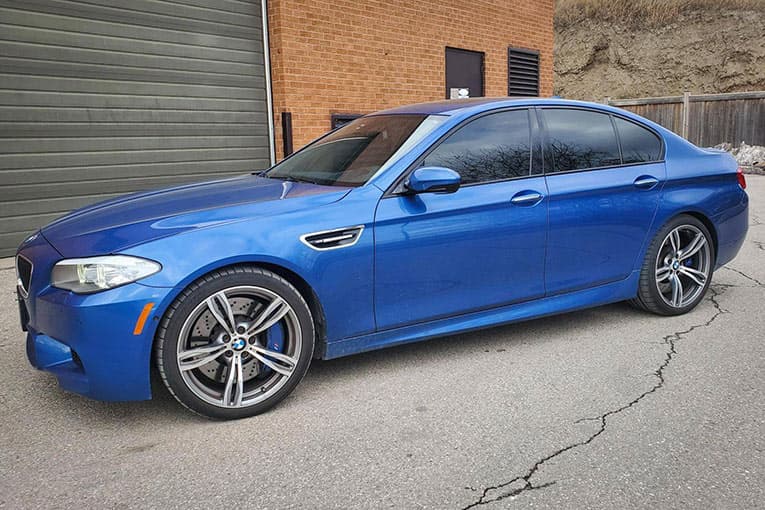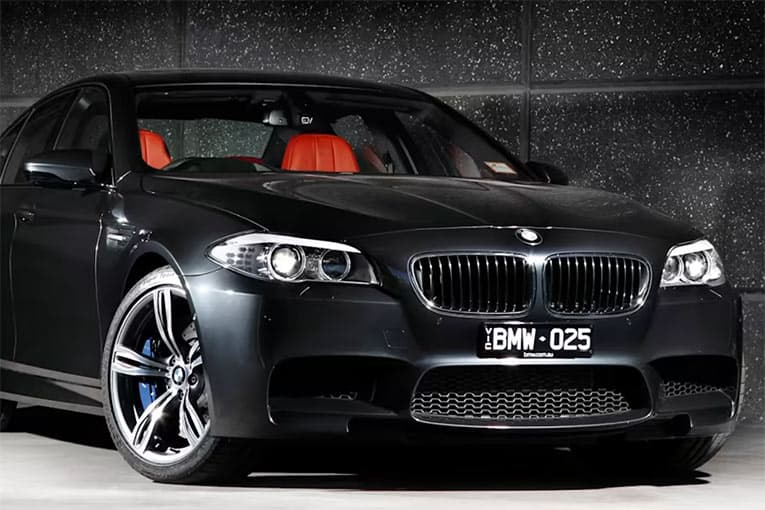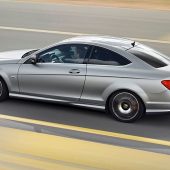It looks much like a BMW 5 Series Sedan, but the new BMW M5 is actually a very different kind of a car. It is a sports car disguised as a friendly looking sedan. The exterior design gives you a few hints of the car’s power reserves. At the front the double-kidney grille with wide-spread arrangement of the customary M black slats, as well as the three large air intakes in the lower section of the apron all emphasise the cooling air requirement of the engine behind the grille. At the lower edge of the front end, air-channelling flaps developed on the race track ensure optimised aerodynamics. Lowered suspension enhances the car’s sporting presence when viewed from the side. The 19-inch M wheels have a double-spoke design. At the rear a diffuser is integrated into the lower edge of the apron to provide efficient airflow through the back end of the underfloor section. A signature M feature of the new BMW M5 is the twin-pipe exhaust system. The tailpipes are positioned wide to either side of the diffuser. The exhaust doesn’t only look good, but provide exhaust sounds that you could listen all day long. A small but surprisingly significant detail is the subtle rear spoiler on the boot lid.

For the first time, the BMW M5 is now powered by a turbocharged engine. While the preciding M5 had a 5.0-litre V10, there is now a 4.4-litre V8 under the bonnet. The turbocharging not only improves performance, but also the efficiency of the car. While output has increased by around 10 per cent and maximum torque is up by more than 30 per cent, the new BMW M5 burns over 30 per cent less fuel than its predecessor. The 4.4-litre engine develops 560 hp and mighty 680 Newton metres of torque. The top torque is available on a really wide engine rev range, between 1500 and 5750rpm. The maximum horsepower output is delivered between 6000 and 7000rpm. The mighty torque alone delivers such a performance for the car, that when you reach those higher revs, you are already very close or beyond the speed limits. So only bad thing in a car with this much horsepower is that those moments when you get to use all its power, are very short. The acceleration from zero to 100 km/h takes 4,4 seconds and the 200 km/h mark can be reached in 13 seconds. The top speed is electronically restricted to 250 km/h. With an optional Driver’s Package the limit can be raised to 305 km/h.
Great improvement over the preciding model is the transmission. While the previous M5 had the semi-automatic transmission, this new model has seven-speed double-clutch transmission. The M DCT Drivelogic system has been developed specially for the M5. It delivers very fast, and more importantly, very smooth gear changes. The new transmission is not just for track use, but works great on the road as well. The M gear selector allows the driver to choose between D and S mode, and to engage reverse, but the P mode for parking is missing. The park mode is engaged when the engine is turned off. If you want to leave the engine running, you have to change it to neutral and use the electric parking brake. M DCT Drivelogic offers three shift programs in S and D mode and you can also change gear manually, either from the M gear selector, or using the standard-fitted shift paddles on the steering wheel.

In these days, even the performance sedan like BMW M5 has to consider also its fuel efficiency. A range of Efficient Dynamics measures, like Brake Energy Regeneration, Auto Start-Stop function and the volume-controlled oil pump help to improve the car’s efficiency. As a result, the new BMW M5 records average fuel consumption of just 9,9 litres per 100 kilometres and CO2 emissions of 232 grams per kilometre.
The BMW M5 comes with electronically controlled dampers. The Dynamic Damper Control uses electrohydraulic damping force adjustment to provide a perfect damping set-up for each driving situation. The driver can choose between three different damping settings by a press of a button. In Comfort mode the car is enjoyable to drive and it is perfect for longer journeys. The Sport mode activates a noticeably stiffer damper set-up, while the Sport Plus mode delivers the hardest ride. There is a notable difference in damping force between different settings. Also the speed-sensitive Servotronic power assistance offers three settings, Comfort, Sport and Sport Plus, which can be selected at the touch of a button.
The new BMW M5 looks great, sounds fantastic, moves quicker than you can hope for and with its many settings, you can always adjust the car for different driving situations. So it is pretty close to perfect. But when the car is loaded with all these electronics, does it take something away from the fun of driving?
Specification
Engine
- Petrol
- 8-cylinder
- 4395cc
- Twinturbo

Power
- 412 kW (560 hp) / 6000-7000rpm
Torque
- 680 Nm / 1500-5750rpm
Transmission
- 7-speed automatic
- RWD
0-100km/h / 0-62mph
- 4.4 seconds
Top speed
- 250 km/h
Fuel consumption
- 9.9 l/100km
CO2 emissions
- 232 g/km










